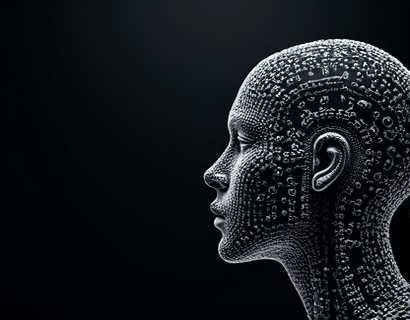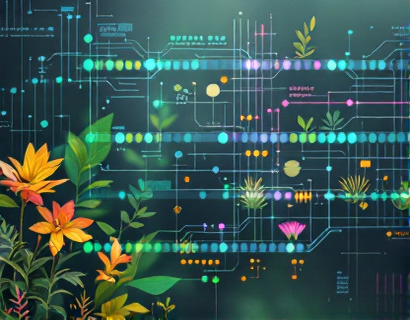Unlocking Device Potential: The Future of Open-Source Technology for Enhanced Performance and User-Centric Design
The landscape of technology is rapidly evolving, driven by the relentless pursuit of innovation and the democratization of access to advanced tools. At the heart of this transformation is the open-source movement, which has revolutionized the way software is developed, distributed, and used. This article delves into the future of device performance and user experience through the lens of open-source technology, highlighting the benefits of an open operating system that prioritizes flexibility, customization, and seamless integration across devices.
Open-source technology has long been a cornerstone of innovation, fostering a collaborative environment where developers from around the world can contribute to a shared codebase. This collaborative approach not only accelerates the development process but also ensures that the software remains adaptable and resilient. For device performance and user experience, this means a system that is constantly evolving to meet the needs of users, rather than being locked into a proprietary and static framework.
The concept of an open operating system for devices represents a significant leap forward in this domain. Unlike traditional operating systems that are closed and controlled by a single entity, an open operating system invites contributions from a diverse community of developers. This openness leads to several key advantages, starting with unparalleled flexibility. Users are no longer bound by the limitations imposed by a closed system; instead, they can tailor the operating system to their specific needs and preferences.
Customization is another cornerstone of this open operating system. Users can modify every aspect of the system, from the user interface to core functionalities. This level of control empowers users to create a personalized experience that aligns perfectly with their workflow and preferences. For instance, developers can optimize the system for specific tasks, such as video editing or software development, by installing and configuring the necessary tools and plugins.
Seamless integration across devices is another critical feature of this open operating system. In an era where users interact with multiple devices throughout their day, from smartphones and tablets to laptops and smart home devices, a cohesive and integrated experience is essential. An open operating system facilitates this by providing a consistent framework that can be adapted to different hardware platforms. This ensures that users can seamlessly transition between devices without encountering compatibility issues or losing their work.
The benefits of an open operating system extend beyond just flexibility and customization. Performance is a key concern for users, and an open system can deliver on this front as well. By leveraging contributions from a global community, the operating system can incorporate the latest advancements in hardware and software optimization. This results in a system that is not only efficient but also capable of handling resource-intensive tasks with ease. For example, users can run complex simulations, render high-quality graphics, or manage large datasets without compromising on performance.
Moreover, the open nature of the operating system fosters a culture of transparency and trust. Users have access to the source code, allowing them to audit and verify the security and integrity of the system. This transparency is crucial in an age where data privacy and security are paramount. Developers can identify and fix vulnerabilities quickly, ensuring that the system remains secure and reliable.
The user-centric design of this open operating system is another significant advantage. Traditional operating systems often prioritize the needs of the developer or the company behind the product, sometimes at the expense of the end-user. In contrast, an open operating system is driven by the collective input of its users. This user feedback loop ensures that the system evolves in a direction that truly enhances the user experience. Features and improvements are prioritized based on real-world usage and user needs, rather than corporate strategies or market trends.
One of the most compelling aspects of an open operating system is its potential to level the playing field. Small developers and independent creators, who might otherwise struggle to compete with large corporations, gain access to powerful tools and platforms. This democratization of technology fosters innovation and diversity, leading to a richer ecosystem of applications and services. Users benefit from a wider range of options, tailored to their specific requirements, whether they are professionals, hobbyists, or casual users.
The adoption of an open operating system also has significant implications for education and research. Academic institutions and research organizations can leverage the system to develop custom tools and environments that support their unique needs. This flexibility is invaluable in fields such as computer science, engineering, and data science, where the ability to experiment and iterate rapidly is crucial. Students and researchers can focus on their work, knowing that the underlying infrastructure is robust, scalable, and continuously improved by a global community.
In the business world, the open operating system offers a cost-effective and adaptable solution. Companies can reduce their reliance on expensive proprietary software and instead build custom solutions that fit their specific workflows. This not only saves costs but also enhances productivity, as employees can use tools that are tailored to their tasks. The open nature of the system also means that businesses can easily integrate third-party applications and services, creating a more dynamic and responsive work environment.
Environmental considerations are increasingly important in the tech industry, and an open operating system can contribute to more sustainable practices. By promoting the use of open-source software, the need for constant hardware upgrades is reduced. Users can extend the life of their devices by updating the operating system rather than replacing the entire hardware. This reduces electronic waste and conserves resources, aligning with global efforts to create a more sustainable future.
The future of open-source technology in device performance and user experience is bright, with numerous trends and developments on the horizon. One such trend is the integration of artificial intelligence and machine learning into the operating system. AI can enhance the user experience by predicting user needs, automating routine tasks, and optimizing system performance in real-time. Machine learning algorithms can analyze user behavior and preferences to provide personalized recommendations and settings, making the system even more intuitive and user-friendly.
Another exciting development is the rise of edge computing, which brings computation and data storage closer to the devices that generate and use the data. An open operating system can seamlessly support edge computing by providing a flexible framework that can be deployed across a network of devices. This not only improves performance by reducing latency but also enhances security and privacy, as sensitive data is processed locally rather than being sent to remote servers.
The Internet of Things (IoT) is another area where an open operating system can make a significant impact. As more devices become interconnected, the need for a cohesive and scalable operating system that can manage a diverse array of hardware is paramount. An open operating system can serve as the backbone for IoT ecosystems, enabling seamless communication and data exchange between devices. This opens up new possibilities for smart homes, industrial automation, and other IoT applications.
Looking ahead, the open operating system will likely continue to evolve in response to emerging technologies and user demands. Quantum computing, for example, presents both challenges and opportunities. An open operating system can adapt to quantum hardware by providing the necessary tools and frameworks for developers to create quantum applications. This would democratize access to quantum computing, allowing a broader range of users to explore and benefit from this revolutionary technology.
In conclusion, the future of device performance and user experience is being shaped by the open-source movement, with an open operating system at the forefront. This system offers unparalleled flexibility, extensive customization, and seamless integration, making advanced technology accessible and efficient for all users. By fostering a collaborative and user-centric approach, open-source technology is not only enhancing individual experiences but also driving innovation and sustainability across the tech industry.










































